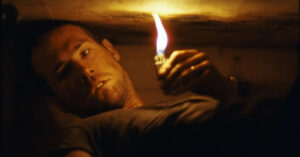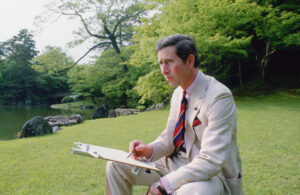When I was a teenager, films about gay men came in two varieties: BFI gay films and Canal+ gay films. BFI gay films were worthy classics from the Seventies and Eighties. Jarman. Fassbinder. Pasolini, if you felt up to it. Canal+ gay films were more fun. If BFI gay films stretched artistic boundaries, then Canal+ gay films reliably delivered the same old story. Two twinks — French usually, but occasionally Dutch or German — would bond over their shared love of swimming or judo. It was always summer, and there was always a bicycle ride followed by a beautifully lit sex scene with a hint of Euro-penis. These films had one of two endings. Ending A: a melancholy parting at summer’s end. Ending B: a twink would drown.
Things are different now. Every TV show has a gay character of one kind or another. The days of scouring the Hollyoaks omnibus for the John Paul storyline are long gone. The world is brimming with “LGBTQ+ content”. So it is odd that the range of film and TV about gay men doesn’t feel much broader than it was when I was young. Higher volume does not seem to have led to greater variety. Instead, we find a careful curation of how gay men are presented on screen, even when such presentation flies in the face of reality. An example of this curation occurred last year. Netflix’s Dahmer caused a minor online fracas when it premiered. The issue was not only that yet another 10-part series about yet another brutal serial killer is a tasteless way for a streaming service to win eyeballs. No, the problem was that Netflix had categorised its gory new show as “LGBTQ”.
Dahmer is a long way from Will & Grace, but you can see why some hapless Netflix worker slapped the LGBTQ tag on the show. Jeffrey Dahmer haunted gay clubs and preyed on gay men. His particular sickness was bound up with young male bodies. And it can’t be denied that Dahmer highlights the risks inherent in the anonymous hook-up culture that many gay men will dabble in at some point. Such risks are perhaps even greater in today’s world of lengthening digital shadows, as illustrated by murders of gay men in Sligo and London, where the killers found their victims not in bars, but on Grindr. Dahmer makes for grim viewing, but it is of gay interest — if only as a reminder that evil doesn’t wear a sandwich board.
I don’t have a strong view on whether or not Netflix was right to classify Dahmer as “LGBTQ”. If anything, the fact that the debate happened at all struck me as faintly comic. The effort to police the content of one sub-category on one streaming service feels misplaced — if the image of gay men is so easily tarnished, then there are bigger problems to deal with. Today, Dahmer is categorised under “US TV Programmes”. Jeffrey Dahmer might not have been the right kind of gay man, but you can’t deny that he was American.
So what is the right kind of gay man? What sort of show does qualify for inclusion in the LGBTQ category? One popular offering on Netflix is Heartstopper, a series that focuses on a burgeoning romance between two teenage boys. If John Lewis made a LGBTQ television show, the result would look a lot like Heartstopper. Fluffy jumpers. Snow angels. Awkward smiles. It’s all very sweet. Characters endure some implausibly vanilla bullying, but spend most of their time exchanging emojis and shy little kisses.
I am not the first to observe that Heartstopper is an oddly chaste affair given that the central protagonists are teenage boys, hardly a demographic famed for sexual restraint. But Heartstopper isn’t made for teenage boys. It’s not even for gay teenage boys, although I’m sure that many of them watch and enjoy it. This show unfolds in the rigidly ordered territory of the tweenage girl, a dreamscape in which young men are desirable precisely because they are unattainable, meaning that there is no risk of being desired in return. Nothing wrong with that, but it does mean you have to look elsewhere for contemporary TV or film that is interested in gay men for their own sake.
This is surprisingly difficult at the moment. Young Royals is a Netflix drama based on one of Hollywood’s ropier elevator pitches: what if the heir to the Swedish throne was gay? Over on Amazon we find Red, White & Royal Blue, a film which asks the question: what if the heir to the British throne was gay? These are fun, silly productions, and are beloved by thousands. But again, they use male homosexuality to advance plot. They feature gay men, but they are not about them.
Naturally, there have been more serious attempts to capture gay male experiences in recent years. Moonlight and Call Me By Your Name have both entered the glitter canon; the former celebrated for its story of memory and survival, the latter for its tinted, self-absorbed charm. They are beautiful films, but neither made me laugh, and a gay film without humour isn’t very gay at all. To my mind, one of the better recent gay films is The Happy Prince, in which an extravagantly fat-suited Rupert Everett portrays Oscar Wilde’s last days in Parisian exile. Everett’s Wilde rolls down the boulevards, guzzles champagne, falls off tables and leaks brown bile. The film succeeds because it is bleak and because it is funny.
Bleak and funny. These are the qualities that I want from a film about gay men. Humour is especially important. If there’s one common thread to the films and TV in the Netflix LGBTQ category, it is an absence of laughter. Until recently, I had come to believe that this humourlessness was total. Gay men on screen would be forever trapped on a continuum with Call Me By Your Name at one end and Heartstopper at the other, doomed to be either a melancholy, piano-playing twink or an improbably earnest YA character. So when Sebastián Silva’s Rotting in the Sun premiered last summer, I was delighted. The film is a crime thriller and a wince-inducing critique of contemporary gay culture. Above all, it is extremely funny. Here was the cackling in the dark I had been craving.
The film stars Silva and Jordan Firstman, both playing exaggerated versions of themselves. Sebastián is a gay man of the Von Aschenbach school. An artist — a filmmaker, in this case — who thinks about death a lot. He lazes around his Mexico City apartment and researches suicide methods while his maid does the dishes. Every so often he opens the fridge. There isn’t any food in there, just two bottles of amyl nitrate. Sebastián takes a deep huff and goes back to bed. Later, he’ll enjoy some plump lines of ketamine for dessert.
Sebastián goes to a gay beach for a change of scene. Naked men grunt and gargle in the dunes. Sebastián sits on the sand reading E. M. Cioran (this film is, first and foremost, a comedy). Tadzio never makes an appearance. Instead he meets Jordan, an American tourist and professional Instagram influencer. Things go downhill from there. It is difficult to describe what makes Jordan so irritating. There is an immediate presumption of total intimacy with Sebastián that is alarming, almost psychotic. There is the ceaseless chatter, countless words advancing like the Golden Horde across the steppe. There is the lack of content, let alone meaning, to anything that he says. Even his smile is annoying.
Silva does annoying very well. Rotting in the Sun is as much about irritation as anything else. The film opens on a public square in which rival buskers create a nightmarish mashup of “Jingle Bells” and “Zombie” by The Cranberries. A random woman accuses Sebastián of abusing his coprophage dog. His apartment complex is a chaotic building site. Work is a series of voice notes and juddering Zoom calls. Even his gay beach holiday is a source of vexation. Press about the film focused on the large number of male genitals on display, but there is nothing titillating about any of them. They are obtrusive and ridiculous. Far from evidence of liberation, all of those cocks feel like an imposition to Sebastián. It all begs the question of what he is doing there in the first place. This is a hell of his own devising.
Jordan is a social barnacle, and Sebastián is his chosen rock. “I love you,” he says, five minutes into their acquaintance. He wants Sebastián to work on a film with him — a film about him. When Sebastián finally lashes out, Jordan responds: “You can’t hurt me, because I’m happy.” He is almost convincing. Rotting in the Sun is a bleak, hilarious satire. Like all true satire, the film is resolutely focused on the world as it actually is. There are no snow angels, no golden Italian summers. Part of the film’s strength comes from its focus on men in their thirties. Illusions have departed. For Sebastián, this means a retreat into comfortable angst. Jordan is the true realist. Instagram for money, drugs and sex for fun.
As Silva has been at pains to point out in interviews, this is not a portrayal of all gay men. Still, these are types — stunted wallower, fragile clown — that are instantly recognisable to many of us. To see them lampooned is a pleasure. But this is more than a piss-take. Both characters are vindicated by the end of the film. A Cioran-esque twist confirms Sebastián’s bleak worldview, while Jordan’s forcefulness becomes an endearing strength. These men are ridiculous, but that doesn’t make them wrong. Not entirely, anyway.
I enjoyed Rotting in the Sun for its comedy and its honesty. The two go together, I think. If the kind of gay men we see on screen are for the most part bland and humourless, it is because most filmmakers aren’t especially interested in gay lives as they are actually lived. Of course, there will always be a place for shows like Heartstopper and Young Royals. Cosy Teen Nonsense has been a recognisable genre since the days of Dawson’s Creek, and there is no reason why there shouldn’t be the occasional gay iteration.
But there needs to be room for honesty, too. At times I wonder if we have exchanged the predictability of Canal+ gay films for the predictability of a safe teen romance, eternally retold. I want more than that. I want annoying gay men in my gay films, and I want to be invited to laugh at them. And if there’s a bicycle ride followed by a beautifully lit sex scene in there too, well, I won’t complain.
Disclaimer
Some of the posts we share are controversial and we do not necessarily agree with them in the whole extend. Sometimes we agree with the content or part of it but we do not agree with the narration or language. Nevertheless we find them somehow interesting, valuable and/or informative or we share them, because we strongly believe in freedom of speech, free press and journalism. We strongly encourage you to have a critical approach to all the content, do your own research and analysis to build your own opinion.
We would be glad to have your feedback.
Source: UnHerd Read the original article here: https://unherd.com/




